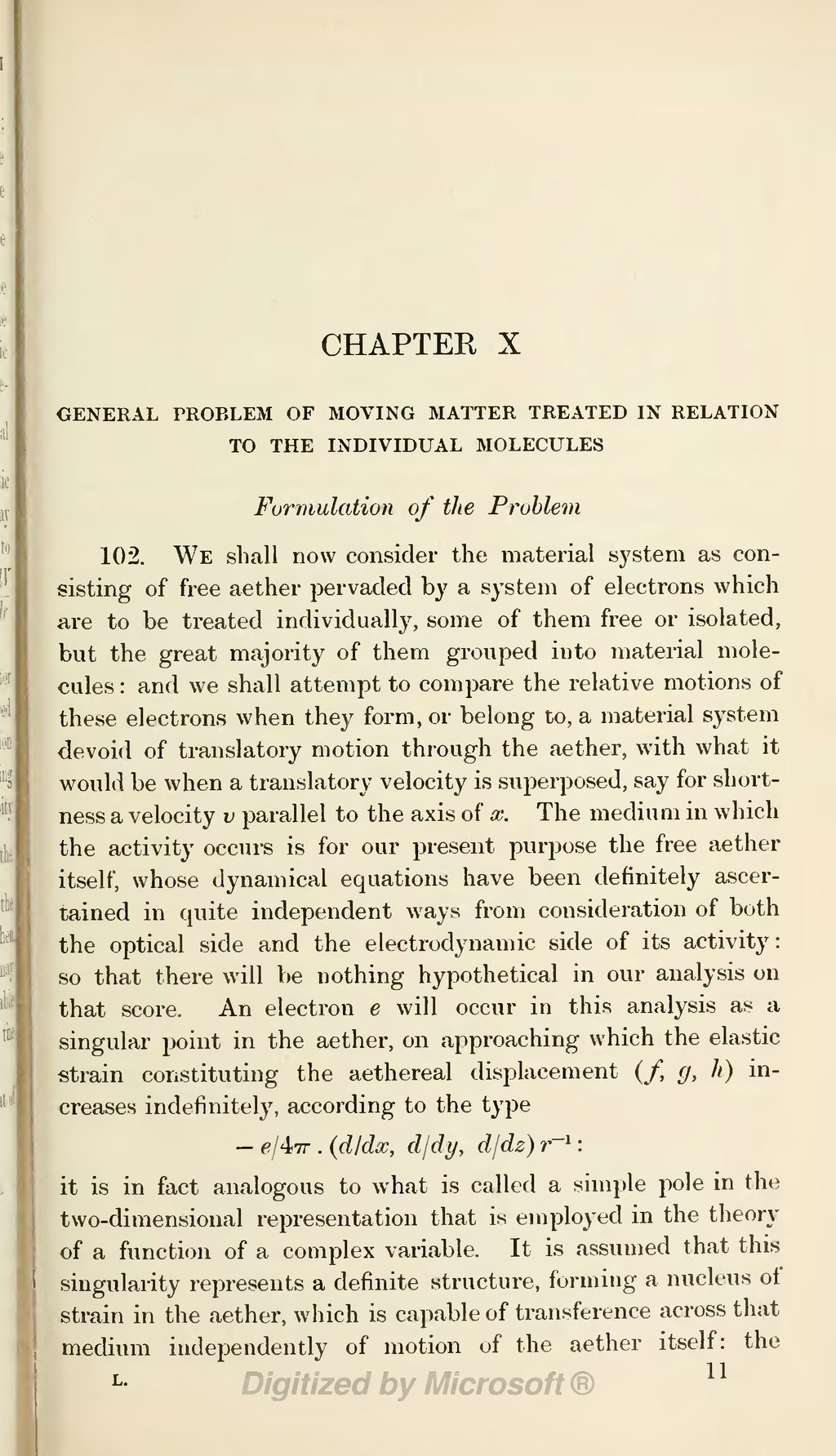CHAPTER X:
GENERAL PROBLEM OF MOVING MATTER TREATED IN RELATION TO THE INDIVIDUAL MOLECULES
Formulation of the Problem
102. We shall now consider the material system as consisting of free aether pervaded by a system of electrons which are to be treated individually, some of them free or isolated, but the great majority of them grouped into material molecules: and we shall attempt to compare the relative motions of these electrons when they form, or belong to, a material system devoid of translatory motion through the aether, with what it would be when a translatory velocity is superposed, say for shortness a velocity v parallel to the axis of x. The medium in which the activity occurs is for our present purpose the free aether itself, whose dynamical equations have been definitely ascertained in quite independent ways from consideration of both the optical side and the electrodynamic side of its activity: so that there will be nothing hypothetical in our analysis on that score. An electron e will occur in this analysis as a singular point in the aether, on approaching which the elastic strain constituting the aethereal displacement (f, g, h) increases indefinitely, according to the type
it is in fact analogous to what is called a simple pole in the two-dimensional representation that is employed in the theory of a function of a complex variable. It is assumed that this singularity represents a definite structure, forming a nucleus of strain in the aether, which is capable of transference across that medium independently of motion of the aether itself: the

